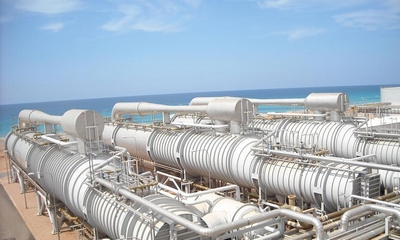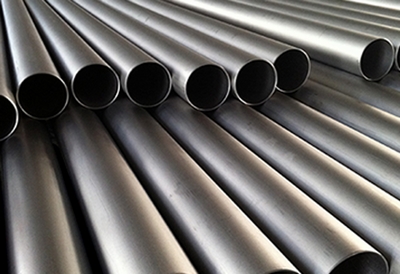Freshwater accounts for about 3% of the earth’s water resources. It is a trend for the world to obtain new freshwater resources by desalination. At present, desalination has become the main way to obtain water resources in water-deficient areas such as the Middle East. 1. The status of desalination in the world


By 1993, there were 9014 desalination equipments in 5738 regions of the world, with a total capacity of 1.624 X107 m3/d. The total capacity in the Middle East alone was 8.91*106 m3/d, accounting for 55%, while that in the United States was 2.37*106 m3/d, accounting for 5%.
As early as the 1950s, seawater desalination has been used to produce fresh water. The main methods of seawater desalination are as follows:
(1) Evaporation method: multi-stage flash method, single-stage flash method, vertical multi-effect method, transverse multi-effect method, immersion tube method, vapor compression method; and (2) membrane method: electrodialysis method, reverse immersion method;
(3) Compound method.
Among them, 60% were evaporation method, 33% were reverse immersion method and 5.5% were electrodialysis method. Table 1 shows the main desalination methods used in Japan and their practical proportions.
Application of Titanium 2 in Seawater Desalination Equipment
2.1 Heat Conducting Pipe in Seawater Desalination Equipment
The heat pipe of the original seawater desalination equipment is mainly made of copper alloy tube, which has been replaced by titanium tube with high reliability and maintenance-free because of its many shortcomings. (1) Thickness of the wall of the titanium tube
The wall thickness of heat-conducting pipe is determined by using conditions, material of tube sheet, construction ability of expanding operation and welding technology of pipe end. Because the diameter of heat-conducting pipe is small and the strength requirement is not high, thin-walled pipe is adopted in practical use. Generally, copper-alloy pipe is 0.9mm-1.2mm in equal wall thickness; Titanium pipe is used instead of titanium pipe, and its corrosiveness is small. Where possible, thin-walled welded pipes with a wall thickness of 0.3 mm can be used.
2) Thermal Conductivity of Titanium Tubes
Because of the different materials of heat pipe, the thermal conductivity is different, such as titanium 17W/(m?K), aluminium brass lOW/(m?K), 90/10 white copper 47W (m?K), 70/30 white copper 29W/(m?K), so the thermal conductivity of heat pipe can be controlled by the change of wall thickness. In the above materials, the thermal conductivity of titanium is the smallest. For example, the thermal conductivity of thin-walled titanium welded pipe is worse than that of aluminium brass, but it is equal to that of 90/10 white copper and better than that of 70/30 white copper.
(3) Economy of Titanium Tube
The unit mass price of titanium tube is 2-6 times higher than that of copper alloy, but considering the cost performance, the price of titanium tube can compete with that of copper alloy tube. Because of the low density of titanium and the same wall thickness, the quality of titanium tube with the same length is only 50% of that of copper alloy tube. When the wall thickness of titanium tube is 50% of that of copper alloy tube, the quality of titanium tube with the same heat transfer area is only 50%. According to the current price level, the overall price of thin-walled titanium welded pipe is the same as that of aluminium-copper pipe, which is cheaper than that of white copper pipe. It can be seen that titanium pipe is competitive in price.
Development and Application of 2.2 Japan Thin-walled Titanium Welded Pipe
The successful development of rolling technology of titanium strip has become the basis of mass production of titanium welded pipe. In the 1960s, titanium wire was used in the production of mercury caustic soda electrolysis; in the early 1990s, in order to prevent pollution, the production process of caustic soda was improved. With the adoption of diaphragm method, more than 700 tons of titanium strips were applied. Taking this as an opportunity, Japan developed the technology of continuous production of hot-rolled and cold-rolled titanium strips and established it. The production technology of thin-walled titanium welded pipe for seawater desalination and power station condenser has been developed.
Power plant condensers produced by Hitachi, Mitsubishi and Toshiba use titanium welded pipes 0.5mm thick, seawater desalination devices produced by Mitsubishi, Kawasaki, Hitachi, Mitsubishi and Kobe Steel, and use titanium welded pipes 0.5mm-0.7mm thick.
Titanium welded pipes have been widely used as heat transfer pipes in seawater desalination, ironmaking, shipbuilding, petroleum refining, chemical industry and other fields. By 1983, in 16 years, Japan had produced 4038t thin-walled titanium welded pipes for desalination equipment all over the world. So far, no damage has occurred due to seawater corrosion.
(1) Ventilation condenser and jet compressor
Japan’s real desalination equipment is 2650t/d desalination equipment built by Matsushima Carbon Mine Co., Ltd. in 1967. Because of the corrosion of Br – in seawater, the heat transfer tube and tube sheet of the air condensator and jet compressor of the device can not be made of copper alloy. After the replacement of titanium, no failure caused by corrosion has occurred.
(2) Condenser of heat release unit
Multistage flash condenser uses sea water as cooling water to cool water vapor generated by flash chambers at all levels. Because sea water is often mixed with sediment and marine organisms, they adhere to heat transfer tubes and tube ends, and corrode copper alloy tubes. Therefore, titanium tubes are used in almost all MSF desalination equipment heat transfer condensers. Especially in order to kill bacteria in seawater, when oxygen has to be injected, titanium tubes with good corrosion resistance are needed.
(3) Condenser in Heat Recovery Department
The heat transfer area of the condenser in the heat recovery unit is large. For economic reasons, copper alloy tubes are usually used now. Titanium tubes are only used in special occasions, such as those containing contaminants such as ammonia or hydrogen sulfide. In 1977, the MSF desalination unit of 3600 t/d exported to Germany adopted titanium instead of copper alloy because it was an accessory equipment of ammonia. Due to the corrosion of oxygen sulfide, the 3120 t/d MSP desalination equipment in Peru was corroded after one year of use. Finally, all heat transfer tubes were replaced by titanium tubes.
It is reported that 60,000 titanium pipes are used in 100 tons of seawater desalination units per day. From 1967 to 1994, 52 sets of condensers and 7 sets of seawater desalination equipment originally used in energy-level thermal power generation were produced in the past 30 years, totaling 11,000 tons of titanium welded pipes.
- Problems needing attention in use
(1) galvanic corrosion
Titanium has a positive potential in seawater and can promote the corrosion of other metals when it contacts with other metals. Titanium or sacrificial anode are used in both heat transfer tubes and tube sheets. In order to prevent hydrogen absorption, Fe-90% Ni alloy is used as sacrificial anode above 80 C, and coated or rubber-lined steel plate is used below 80 C.
(2) Gap corrosion
Titanium tube is installed on the titanium tube plate by expanding method. Gap corrosion can occur in seawater with pH 8 at 100 C. However, when copper alloy is used in the actual water chamber, even if the seawater temperature reaches 120 C, there will be no gap corrosion. In reality, in order to improve the reliability of equipment, pipe end welding is often used to prevent gap corrosion when used above 100 C.
(3) Hydrogen absorption
Titanium may absorb hydrogen in seawater above 80 C. When cathodic protection is applied, it will cause hydrogen absorption when overprotection is applied. If Fe-9% Nq alloy is used as sacrificial anode plate, titanium will not absorb hydrogen. (4) Vibration.
Due to the thin wall of titanium tube, when replacing copper alloy tube, attention should also be paid to the damage caused by tube vibration. This problem can be solved by the method of smaller spacing between tube support plates than copper alloy tubes.
